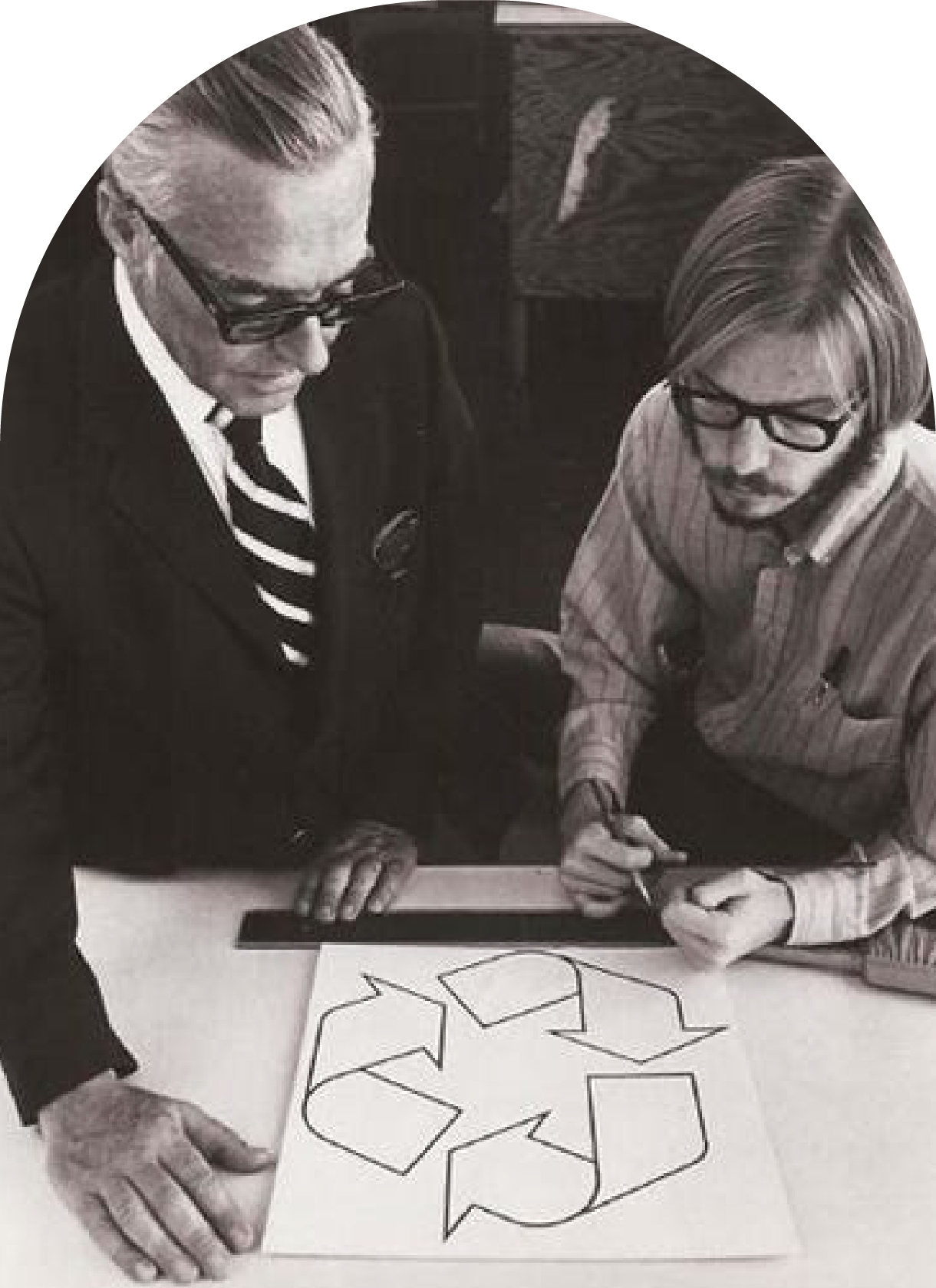Recycling & The Mobius Loop
11-13-2020America’s history with recycling goes back much further than the creation of the famous Mobius Loop design, but the Loop’s creation was at the height of a movement that was ready to get rolling. The widely known symbol of three green arrows chasing one another has been attributed to the recycling movement and America’s hippie interest in healing the earth that provides us with so much.

The Mobius Loop is Born
Environmental issues became a focal point around the world, ultimately leading to the first Earth Day in 1970. Gary Anderson, a 23-year-old engineering student in North Carolina, won a corporate contest with his universal recycling symbol – the Mobius loop. The Mobius loop became the symbol uniting all the various environmental factions and communes towards a common cause. Recycling is sexy.
Healing the earth is sexier.
“The figure was designed as a Mobius strip to symbolize continuity within a finite entity. I used the arrows to give directionality to the symbol. I envisioned it with the small edge or the point of the triangle at the bottom. I wanted to suggest both the dynamic (things are changing) and the static (it’s a static equilibrium, a permanent kind of thing). The arrows, as broad as they are, drawback to the static side.” Anderson explained
“It didn’t take me long to come up with my design,” he later wrote in the Financial Times. “A day or two. I almost hate to admit that now. But I’d already done a presentation on recycling wastewater, and I’d come up with a graphic that described the flow of water, from reservoirs through to consumption, so I already had arrows and arcs and angles in my mind.”
CCA (Container Corporation of America) attempted to apply for a patent in the U.S. Patent and Trademark Office. However, the claim was heavily contested. With this strike down, Anderson’s design belonged to the public domain free to use by all people.
After his creation of the symbol, Anderson continued in his advocacy of protecting the environment, eventually getting a Master’s Degree in Urban Design and Ph.D. in Geography and Environmental Engineering, his skills from which he used to contribute to the responsible management for the growth of our cities.

What does the Mobius loop tell us?
The Mobius loop is a widely recognised symbol, although its name may not be. The original Mobius loop is presented in the form of a triangle made up of three green arrows that appear to be looping back on themselves. If an item has been stamped with this symbol, then it means the item itself has the potential to be recycled, although the item itself may not be made from recycled materials.
In 1988, the Society of Plastics Institute (SPI) developed a system of codes and symbols of their own, to facilitate the sorting of plastics. While SPI assigned seven types of plastics a code, not all municipal recycling programs accept the same materials. The concern remains on the consumer to know what types of plastic are processed locally.
If the item has been made from recycled materials, then the Mobius loop will be accompanied by a percentage, indicating approximately how much of that item has been made using recycled materials. Also, if the item can be recycled, this symbol doesn’t guarantee that it can be recycled by all centres/systems, so you should check locally before placing an item, stamped with a Mobius loop, in the recycling.
The Future of Recycling
Nowadays we’ve learned some hard truths about recycling. That doesn’t negate the fact that The Mobius Loop inspired generations after it to think and act with the earth in mind. It’s hard to move the massive ship of consumer goods but we are changing it together piece by piece and step by step. Now it’s at the forefront of many households to buy reusable first. Reusable products help limit the amount of waste we put back out into the world. We may not be able to stop buying the necessities for getting chores done, but at least we can buy consciously! As we work towards a 100% renewable future, take in mind that each small step you make is worth it. If it costs a bit extra now for that reusable good, then overtime it will save you and the earth heartache down the road.
Love out loud and thank you for reading!



